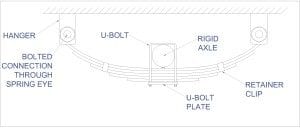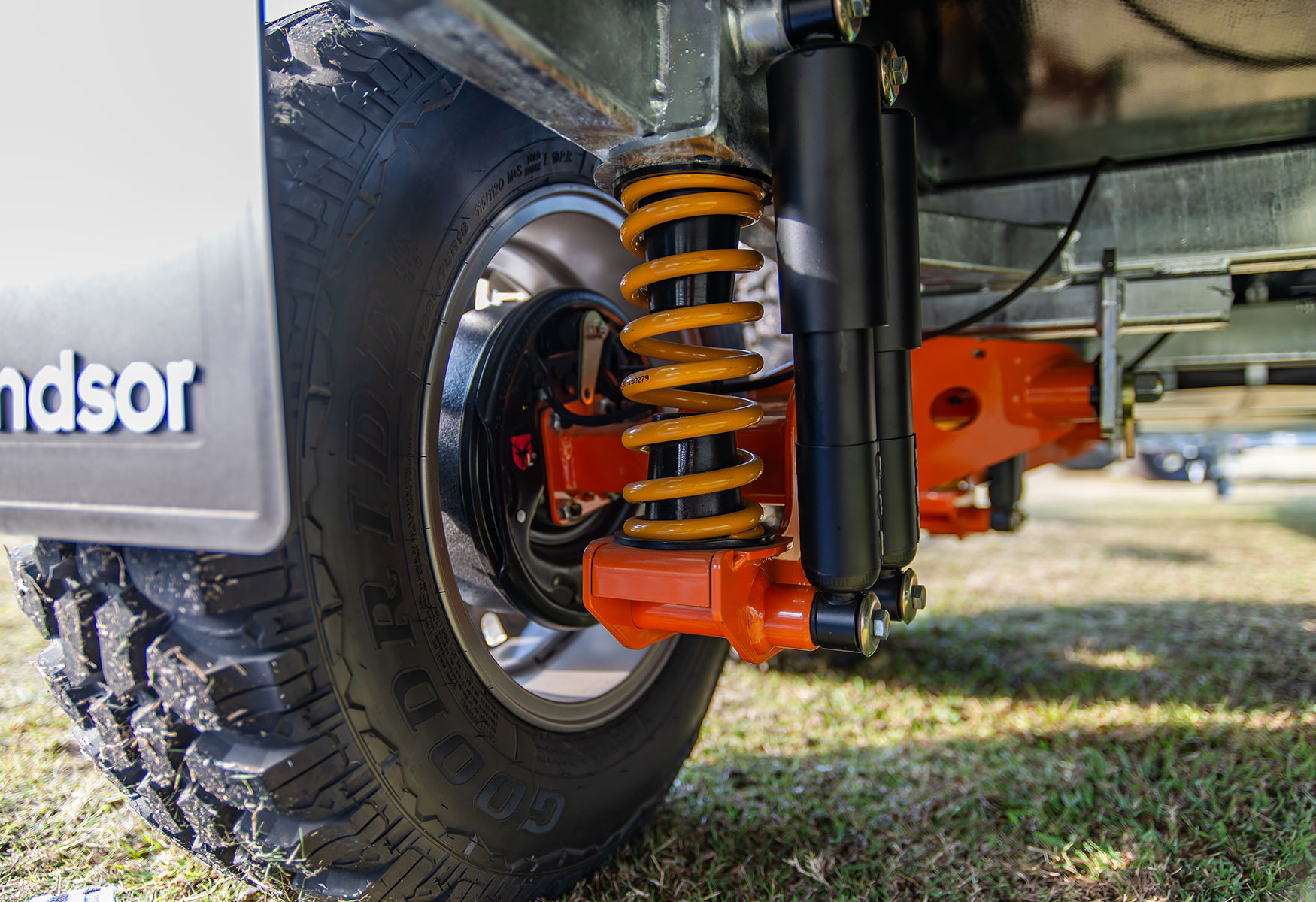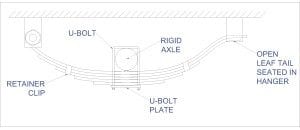A Guide To Caravan Suspension Systems
Proper suspension is essential for your caravan to guarantee a safe and smooth towing experience as you explore the length and breadth of Australia. Like your towing vehicle, your caravan has a body and wheels that encounter turns and bumps and respond to braking, which is why dependable suspension is vital. Here is a rundown of some basic caravan suspension systems, and a summary of those in our Windsor models.
What is caravan suspension?
In simple terms, caravan suspension is the part of a vehicle that links the body to the wheels, enabling it to safely and efficiently navigate various terrains and driving conditions. It can help minimise a caravan's swaying and also improve safety, comfort, tyre traction, and load capacity.
Touring caravans like Windsor’s Genesis range are considered semi-off-road caravans. They are designed for occasional off-road use but not extreme off-road conditions or very rough trails. The Windsor Wild range features off-road caravans, however, both of our ranges boast independent suspension systems that can adapt to a variety of terrains, including corrugated roads.
What do caravan suspension systems do?
Essentially, caravan suspension systems have two essential functions—ride and handling. For a smooth ride, they should absorb and reduce the impact of shocks from uneven surfaces, and minimise the force transferred to the caravan body itself. For handling, they should ensure all four wheels stay firmly in contact with the ground to maintain traction, control, and braking performance, while minimising risk of body roll and giving the driver greater confidence.
What are some caravan suspension types?
Developing new suspension systems is a highly complex scientific process that often involves extensive trial and error before a final product is launched to the market. This is one reason why caravan manufacturers have relied on simple, proven leaf spring designs for over the last 50 years.
Over the last couple of decades, engineers began exploring more innovative approaches. This led to the development of independent suspension systems and they first gained popularity in the automotive industry. These enable the left and right wheels to move independently, enhancing shock absorption and providing greater vertical movement. Here is a brief history of some of the caravan suspension types that have been in use over the years.
Caravan rigid axle caravan suspension
This is the simplest and oldest type of suspension system, first developed during the early days of the automotive industry. Known as the "grandfather" of all suspension systems, the rigid axle suspension has proven its reliability over time and is still widely used today. On the plus side, it is cost-effective and easy to manufacture and install. However, it does have its downsides. Because the design features a rigid beam, the movement of the left and right wheels is interconnected. So, when one wheel experiences a bump, it also causes the opposite wheel to deflect. The result? A rougher, bumpier ride.
Caravan eye-to-slipper and eye-to-eye leaf spring suspension
| Eye-to-slipper: | Eye-to-eye: |
|---|---|
|  |
Leaf springs have been used to support axles since the days of horse-drawn carriages, and their main advantages are their cost-effectiveness and ease of manufacture. The axle is mounted to the leaf spring via U-bolts, and the axle can be mounted either above or below the leaf spring. Typical applications include an eye-to-slipper setup and an eye-to-eye or double-eye setup.
Caravan rocker leaf spring suspension

The rocker leaf assembly is one of the most affordable and widely used tandem axle systems found on caravans. It features a linkage called an equaliser that "rocks" around its centre point, transferring a portion of the load between the two axle groups. This rocking motion is what gives the assembly its name. By distributing the forces from bumps and reducing the load on each spring, the rocker leaf assembly has a longer lifespan than a standard single-leaf spring system. Additionally, the equaliser helps transfer impacts more smoothly from the leading wheel to the trailing wheel, thereby minimising the forces passed on to the caravan's chassis.
Caravan rocker roller leaf spring suspension

The rocker roller assembly (how good is that name?) is an improvement over the standard rocker assembly. Two of the bolted connections of a standard rocker setup are replaced with roller bearings. The roller bearings are less rigid and absorb more minor impacts without significant deflection of the leaf spring itself. Since the rollers are less rigid and absorb some impact, this setup lasts longer and has lower maintenance costs than the rocker setup. However, these suspensions need to be used with extreme caution on heavily corrugated roads, and are definitely not recommended for off-road use!
Caravan air suspension
Airbags have been used in some form in luxury cars since the 1950s and in trucks, trains, and aircraft since the 1940s. Their growing use in caravans is largely due to their affordability and ability to provide an adjustable spring rate. Additionally, they enhance braking and steering performance by helping to maintain better wheel contact with the road.
Air suspension uses a traditional suspension axle system with one key difference: it replaces leaf springs, torsion bars, or coil springs with air-filled conical reinforced rubber bellows. These air springs are designed to provide the appropriate spring characteristics based on the caravan's weight and are typically paired with shock absorbers to manage rebound movements.
There are several types of air suspension systems. The most basic version involves manually inflating and deflating the airbags, typically using a portable air compressor and a car tyre-like valve for controlling air pressure.
Caravan independent suspension
This is one of the more popular suspension systems, and is a key component of Windsor caravans. Caravan independent suspension allows the left and right wheels to move independently of one another, improving shock absorption and allowing for greater vertical travel.
This can reduce swing when driving uphill or downhill. It can increase ground clearance when needed, improve steering stability by reducing a caravan’s centre of gravity, and help prevent tipping during turns or on uneven terrain. It can also enhance handling stability, offer a smoother (and more comfortable) ride, and optimise wheel alignment.
While they are more expensive than traditional rigid axle and leaf spring systems, they have become increasingly popular over the past decade. This is largely due to the growing consumer demand for genuine off-road caravans capable of handling challenging Australian terrains. Yes!
Trailing arm independent suspension
Trailing arm caravan suspension is one of the simplest types of independent suspension systems and has proven to be highly effective. The term "trailing" refers to the tyre being connected to the caravan chassis through a trailing mechanical link. This "arm" is angled and positioned behind the connection to the chassis. As the caravan travels over bumps, the trailing arm pivots on the hanger, moving up and down. To absorb the impact of these movements, a spring is placed between the arm and the chassis in this area.
A shock absorber is also incorporated to dampen the rebound forces and control the up-and-down motion caused by the compression of the spring. Although the design is conceptually simple, the trailing arm suspension undergoes extensive research to balance factors such as weight, ride stability, and ease of maintenance.
Manufacturers vary the thickness and spring rate of the springs to create suspensions capable of handling different weights. These springs' weight-carrying capacity is expressed as a load rating in kilograms, representing the maximum vertical force the suspension can handle. This is called the GTM (Gross Trailer Mass), which means the caravan's weight acting on the axles.
Caravan suspension on Windsor caravans
The models in Windsor’s Genesis and the Wild ranges both feature independent suspension systems.
Windsor Genesis
The Genesis touring range boasts dual AL-KO independent rubber suspension (IRS), which allows travellers to tackle diverse terrains easily. AL-KO is a global technology group that manufactures and sells products for RVs and other vehicles. The company prioritises quality by ensuring each individual IRS axle meets strict engineering standards. Advanced technology is used to test each axle for key factors such as toe-in camber, and load-rated deflection to ensure reliability and performance.
Toe-in is measured in degrees and is crucial to a vehicle's tyre wear, handling, and overall driving experience. Camber is the angle of the wheel, measured in degrees when viewed from the front of the vehicle. Load-rated deflection assesses how much axles will bend or flex under the applied load.
Another key feature of the AL-KO IRS axle system is its versatile mounting options. Standard brackets simplify traditional under-chassis installation, while side-mount options provide a sleek, professional finish. U-Bolt fixing can also be used when necessary. Rubber cords at both ends of the beam allow for independent suspension movement, functioning similarly to an integrated shock absorber by offering a self-dampening effect. The system also provides multiple starting angles to achieve the ideal ride height, optimising the trailer for better towing performance.
The Genesis range also offers AL-KO 50mm ball coupling, which is easy to attach and provides a safe connection between the trailer and your tow vehicle.
Windsor Wild
The Windsor Wild range boasts a Cruisemaster CRS2 trailing arm suspension with a premium powder coat finish. The Cruisemaster Suspension system was one of the first independent suspension systems to gain massive popularity in the Australian market. It is lightweight and provides a quality ride.
The CRS2 features a single-arm design, a twin-rate spring system, 30mm gas-charged dampers, and polyurethane bump stops. It also includes a built-in cable management system, allowing camber and toe adjustments. Offering a superior ride quality, the CRS2 performs equally well on paved roads and rough dirt tracks. The CRS2 also incorporates a degree of positive camber to maintain proper wheel alignment under load.
In terms of coupling, it features Cruisemaster DO35 coupling which enhances safety and on-road performance with its simple-to-use locking mechanism and patented tow pin, allowing for easy and reliable hitching.

